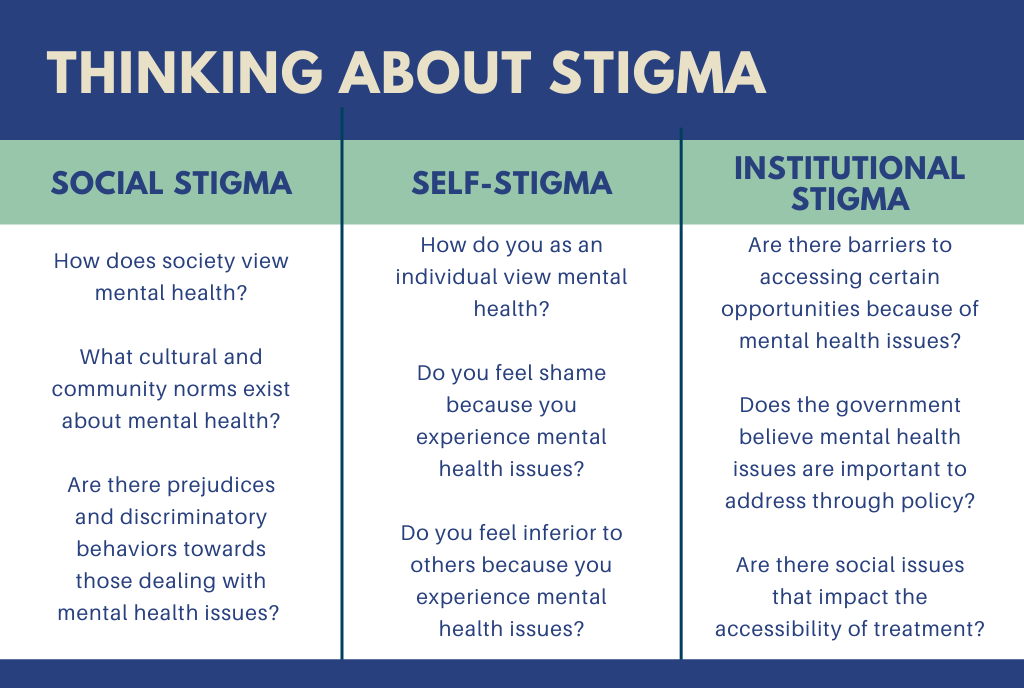There are three main types of stigma. They are social stigma, self-stigma, and institutional stigma. They each have their own characteristics, but they all impact each other.

Social Stigma
Social stigma is the public’s general disapproval and negative attitudes towards mental health. Those with mental health problems are often viewed as dangerous or incompetent; their mental health is considered a character flaw rather than a circumstantial creation. Social stigma creates a lack of understanding between an individual with mental health issues and their family, friends, coworkers, and others. Many react with anger or fear towards those dealing with mental health issues. These reactions create actions like bullying or harassment. Because of social stigma and the actions of those around them, people dealing with mental health issues are isolated from their communities and denied opportunities to seek help.
Social stigma is created through interactions with family, friends, peers, and society as a whole. In today’s tech-savvy world, social media contributes to how stigma is communicated. To learn more about social media and mental health, Click Here.
Self-Stigma

Self-stigma is the negative attitudes and beliefs an individual has about their own mental health. Self-stigma often comes from external sources but is then internalized. People struggling with their mental health often feel shame, judge themselves harshly, and blame themselves for their problems. This lowers self-esteem, often making the person struggling to feel worse. It makes the individual feel unworthy of good health. Self-stigma discourages individuals from seeking, and following through, with treatment.
Institutional Stigma
Institutional stigma, which is also referred to as professional stigma, is the systematic application of negative beliefs and attitudes into policies and practices. Institutional stigma can take many forms. Most often, institutional stigma focuses on the limited opportunities for those with mental health issues. These limits can appear in employment options, workplace standards, educational opportunities, housing options, and medical care. Institutional stigma also includes policy choices, like funding and governmental commitment to addressing mental health in communities. All of these factors contribute to the inaccessibility of care and a lower quality of life for those struggling.
Institutional stigma also encompasses social issues that impact a person’s ability to access treatment and other mental health resources. To learn more about mental health and specific social issues, navigate through the rest of the exhibition!
